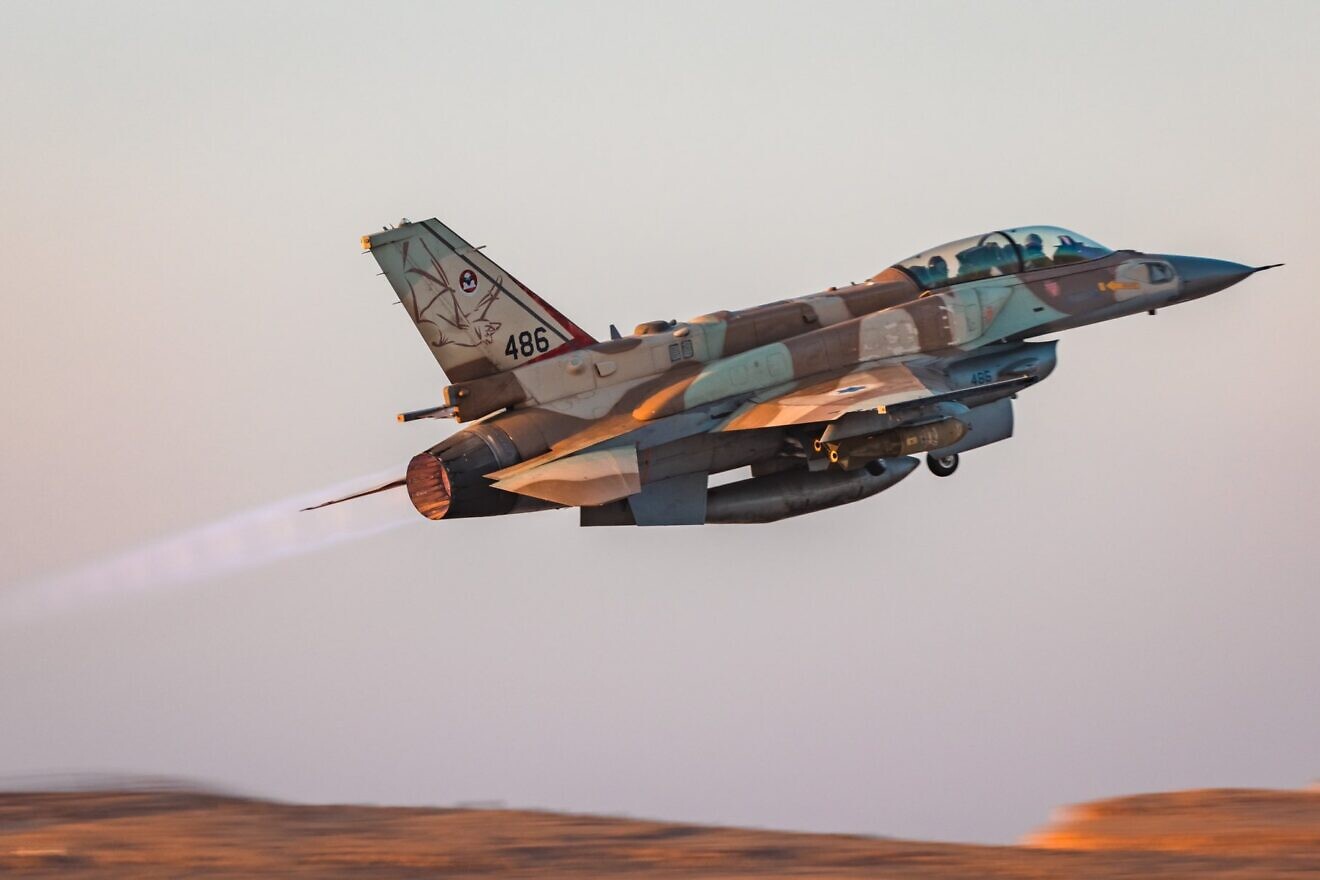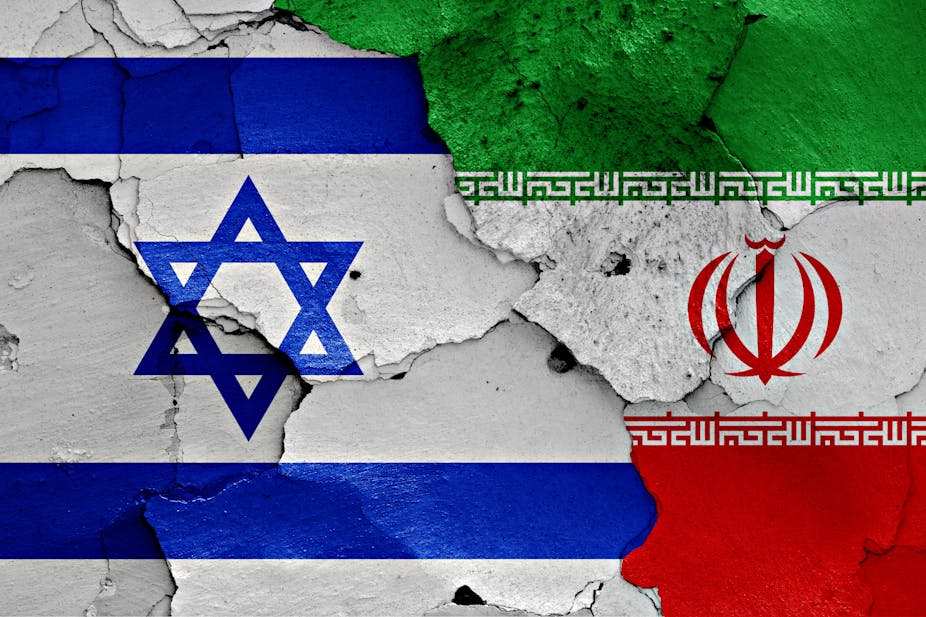OPERATION DAYS OF REPENTANCE: The October 2024 Israeli strikes that break the aura of Iranian invincibility

Did you know that the 26th October 2024 Israel's pre-dawn attack on Iran was one of the biggest and most complex air assaults the country has ever conducted?
On 26 October 2024, in response to months of continuous attacks from Iran and its proxies, as well as a recent barrage of Iranian 180 ballistic missiles on Israel on 1 October, Israel launched three waves of strikes on Iran, codenamed “Operation Days of Repentance”. The attack marked the first time since the 1980s that Iran has faced a sustained assault from a foreign adversary. Israel said the strikes were launched in response to the Iranian strikes against Israel earlier that month.
In what was described as a "complex" operation, Israeli fighter jets, supported by air-to-air refuelling aircraft and reconnaissance planes, left their bases before midnight on 25 October. They had to fly more than 1,000 miles to be within range of their targets - a journey that would have required the warplanes to refuel en route and fly over hostile airspace.
The aircraft were armed with so-called "stand-off munitions" - missiles that can be launched from a distance, meaning they did not need to enter Iranian air space to achieve their goal. Israel has not publicly acknowledged the route for its operation. However, it is thought the Israeli Air Force, including 201 Squadron, which operates F-16s, flew over Syria and then into Iraq, firing their weapons from Iraqi airspace, before returning home.
The Iraqi government on Monday made a formal complaint to the United Nations, accusing Israel of a "blatant violation" by using its airspace to attack Iran. Open-source reporting indicates that Israel then hit targets in around 20 locations across Iran, including close to Tehran and in the west of the country.
Before embarking on the strikes, Israel informed Iran a few hours ahead of the attack what would be targeted, and warned Iran against responding. According to the Israeli military, the strikes targeted Iranian military sites, including air-defense batteries, a UAV factory, and missile production facilities, with all Israeli aircraft returning safely.
The Israeli attack involved over 100 aircraft, including F-35 Lightning II stealth fighters, traveling 2,000 kilometres (1,200 mi) and using heavy munitions. Some of the aircraft breached Iranian airspace. A preceding attack on Syria reportedly targeted radar defenses. An Iranian news agency associated with the Islamic Revolutionary Guard Corps (IRGC) reported that military installations in western and southwestern Tehran, as well as bases in the Ilam and Khuzestan provinces, were attacked.
Four Iranian Army soldiers were reportedly killed in the attack. An Israeli official said that following the strikes targeting Iranian air defence and ballistic missile sites, Israel could now operate with greater freedom in Iranian airspace. According to a United States assessment, the strikes crippled Iran's missile production capability, estimating it would take at least a year for Iran to rebuild the destroyed components necessary to resume production. U.S. and Israeli officials said that most of Iran's air defense network, including nearly all of its advanced S-300 systems, were destroyed, paving the way for potential future Israeli strikes.
The October 26 airstrike by Israel on Iran is not the first encounter between the two warring nations. Both countries have been engaged in a covert conflict for years. Iran has utilized the "Axis of Resistance", a network of Iranian-backed militant groups, to target Israeli interests, while Israel has reportedly carried out assassinations of high-ranking Iranian officials and nuclear scientists and launched cyberattacks against Iran.
Israel views Iran as its primary threat due to the Iranian leadership's rhetoric advocating for Israel's destruction, their backing of militant organizations, and the nation's nuclear program. Tensions between the countries have escalated further following Hamas-led 7 October 2024 attack on Israel. Following the attack, factions within the "Axis of Resistance," notably Hezbollah in Lebanon and Yemen's Houthi movement, launched assaults on Israel and Red Sea shipping, triggering the Hezbollah-Israel conflict and the Red Sea Crisis. Iran has poured considerable resources into bolstering these groups’ military capabilities and fostering cohesion, aiming for a coordinated Axis effort to dismantle the Jewish state in any large-scale confrontation with Israel.
On 1 April 2024, Israel bombed a consular building in the Iranian embassy complex in Damascus, Syria. The attack killed 16 people, including multiple Iranian officers and proxy fighters. Most notably, Mohammad Reza Zahedi, a commander for the Quds Force, was killed in the airstrike. Iranian officials in the building were allegedly meeting with Palestinian militant leaders at the time of the attack. In response, Iran and its proxies struck Israel on 13 April, targeting military bases. On 19 April, Israel struck an air defense facility in Isfahan, Iran in retaliation. The strikes were limited and de-escalated tensions.
On 31 July, Ismail Haniyeh, the political leader of Hamas, was assassinated in the Iranian capital Tehran by an apparent Israeli attack. Iran vowed to retaliate.
On 17 September, Israel adopted a new war goal: to return civilians displaced by Hezbollah back to their homes in northern Israel. Later that day and the next, thousands of communications devices (including pagers and walkie-talkies) exploded simultaneously across Lebanon and Syria, with Israel aiming to attack Hezbollah members. The attack killed 42 people. In response, Hezbollah launched rocket attacks on northern Israeli cities and towns, including Nazareth, on 22 September. On 23 September, Israel killed two of Hezbollah's top commanders, Ibrahim Aqil and Ahmed Wehbe, in Dahieh, south of Beirut. On 23 September, Israel began a series of strikes in southern Lebanon.
On 27 September, an Israeli airstrike in Dahieh killed Hassan Nasrallah, the secretary-general of Hezbollah. The attack also killed Ali Karaki, the Commander of Hezbollah's Southern Front and Abbas Nilforoushan, deputy commander of the IRGC and commander of the Quds Force in Lebanon.
In response to the killings of Haniyeh, Nilforoushan, and Nasrallah, Iran struck Israel, damaging military bases, in what was the largest attack of the 2024 Iran–Israel conflict. Israel said it had shot down most of the missiles and there had been no harm to its Air Force's capabilities. The US Navy and Jordan also reported intercepting missiles. The two fatalities caused by the attacks were a Palestinian man killed directly by missile debris and an Israeli man indirectly. Israeli Prime Minister Benjamin Netanyahu called it a "big mistake" and vowed that Iran "will pay" for it.
According to US officials speaking anonymously, Israel assured the Biden administration it would refrain from targeting Iran's nuclear and oil facilities, focusing instead on military sites. With the 2024 United States presidential election nearing, American officials worried about being pulled into a wider Middle Eastern conflict. US President Joe Biden asked Netanyahu to plan a retaliation that would "deter further attacks against Israel while reducing risks of further escalation."
On 18 October 2024, two leaked classified foreign intelligence documents from the United States' National Security Agency and the United States Geospatial Intelligence Agency were posted in Telegram channels. The leaked documents were related to the Israeli plans to retaliate against Iran for its strikes against Israel in October 2024. They revealed detailed plans documented by the United States regarding Israeli military measures including Air Force exercises, military drone operations, and the relocation of advanced munitions, as well as satellite imaging conducted by United States intelligence on the Israeli Air Force. One of the documents suggested something that Israel and the United States always declined to confirm publicly: Israel's possession of nuclear weapons. The leaks also revealed the significant contribution of the United States' spying on Iran towards providing intelligence for Israel's planned military operation.
Sources: Wikipedia | Sky News
#penglobalhistory #Israel #Iran #middleeast



